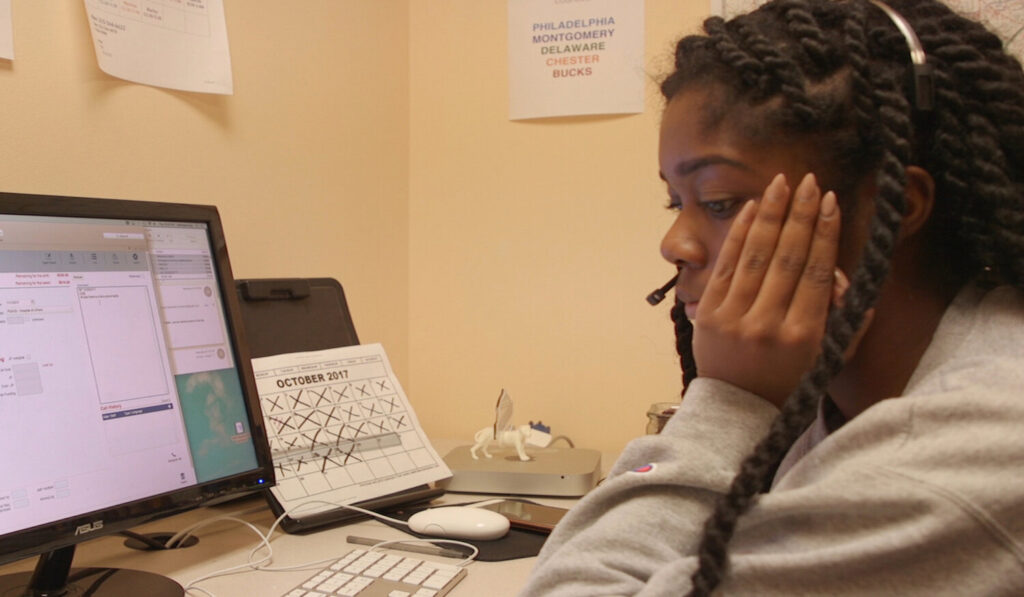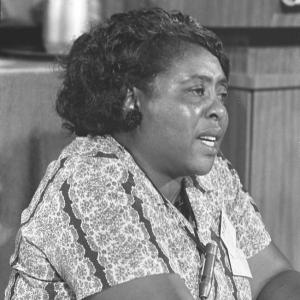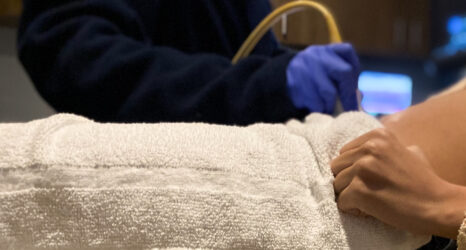Oscar-shortlisted documentary short “Abortion Helpline, This is Lisa” is 13 gut-wrenching minutes of the impacts of the Hyde Amendment, showcasing the devastating reality of the lack of abortion access in the U.S.

When the difference between feeding your kids, forgoing your life-saving medication, or losing everything in your life is $275, what do you do when there’s no one left to call? This is the question viewers are left with when watching “Abortion Helpline, This is Lisa,” a short documentary film offering a glimpse into the lives of five callers to an abortion fund hotline in Philadelphia—each left with an unplanned pregnancy, no options, and everything to lose.
At the Women’s Medical Fund, the counselors depicted in the film (all referred to as Lisa) are often the last call before there’s no one left for thousands of people every year. One caller in the film—who needs only $275 more for her abortion—has already survived one life-threatening pregnancy, has just lost her job, and barely has enough left for groceries.
“All my savings that I had are going towards my insulin and making sure my kid is set,” she tells Lisa, “I have $100 and have enough to cover my rent for this coming month.” The film glaringly shows us the counselor’s computer screen: There’s only $19 left in funds for the current shift. They will need to call again tomorrow and hope there will be more.
Hope is not going to be enough, but it is all viewers are left with—we never learn how this caller’s situation turns out. The outlook is grim: People who are denied wanted abortions are four times more likely to live below the federal poverty line, and three times more likely to be unemployed than people who receive an abortion, leaving them with chronic economic insecurity. Additionally, those who are denied abortions are more likely to experience complications during birth, raise the child on their own, and remain in an abusive partnership.
This the reality for over 7 million people under the Hyde Amendment, a 1976 federal policy prohibiting the use of Medicaid and other federal funds for abortion, leaving many low-income people in a similar place to the caller above: with no options left.
Directed by Janet Goldwater, Barbara Attie and Mike Attie, “Abortion Helpline, This is Lisa” is 13 gut-wrenching minutes of the impacts of the Hyde Amendment, showcasing the devastating reality of the lack of abortion access in the United States. The film has been sweeping through global film festivals, and was recently named to the 93rd Academy Awards shortlist.
While the film offers us no answers to that first question, it does provide a much-needed wake-up call to the human cost of the Hyde Amendment. “Abortion Helpline, This is Lisa” paints a harrowing picture of life under the Hyde Amendment; after dipping into rent and food money, asking everyone in their life for money, and calling strangers at a fund, a person may still not end up with enough to exercise their legal right to an abortion. They may be forced into giving birth, parenthood, or a self-induced abortion that may or may not be safe. This is the true cost of the Hyde Amendment: for poor people, it makes life one unexpected pregnancy away from being unlivable, and renders the right to an abortion practically non-existent.
As of 2014, 30 percent of Black women and 24 percent of Latinx women between the ages of 15-44 were enrolled in Medicaid, compared to 14 percent of white women in the same age category, making the burden of Hyde fall disproportionately on people of color. Without the option of abortion, reproductive justice advocates have noted, the Hyde Amendment often makes sterilization (which is covered by Medicaid) the only viable choice, echoing the U.S.’s controversial history of eugenics.

These impacts of the Hyde Amendment are well-documented, but facts alone have not been able to catalyze change. “Abortion Helpline, This is Lisa” serves as a necessary and timely reminder that these facts are not just data points; they are real people.
“We made this film to move people,” said Goldwater. “With this film, the voices of those we don’t usually hear from—the individuals actually affected by Hyde—can enter those conversations.”
The audience never actually sees the callers: “Having them as voices means they can stand in for a lot of people,” Goldwater said. Some callers are unemployed, others are experiencing domestic violence, while some are navigating a disability or have a fetal anomaly impacting their pregnancy—all experiences that are shared across the board.
“Abortion Helpline, This is Lisa” is not just about whether or not a caller gets the $275 in the end; it’s a deeply human story about juggling unthinkable choices in unimaginable circumstances—choices that no person should have to make. Barbara Attie sees the film as “a stark reminder that a legal medical procedure that remains inaccessible to so many constitutes a grave injustice.” That’s what makes the Oscar buzz around “Abortion Helpline, This is Lisa” all the more significant: It gives this message a platform to reach a broader audience and opportunity to effect change.
“Abortion Helpline, This is Lisa” is a national rallying cry: It’s time for the Hyde Amendment to end. While the reality of the Hyde Amendment is grim, the current moment is ripe with possibility. In March of 2019, Democrats in Congress introduced the EACH Woman Act, which would provide equal and comprehensive sexual and reproductive healthcare without Hyde restrictions. Three months later, President Biden came out in opposition to the Amendment (a reversal from his previous longtime stance), recognizing that poor women and women of color are disproportionately unable to exercise their right to an abortion. House Democrats have claimed repealing Hyde as a priority, pointing to a shift in focus under the Biden Administration.
The filmmakers envision the documentary as a “powerful centerpiece for a discussion about abortion access,” and their hope is for it to move viewers to take action—to compel us to step up when there is no one left to call. Whether it’s donating to our local abortion fund, making an informed voting decision, or calling our legislators to urge them to work on the movement to repeal, “Abortion Helpline, This is Lisa” urges us to do it now—the human cost of the Hyde Amendment is too high to wait.
You may also like:





